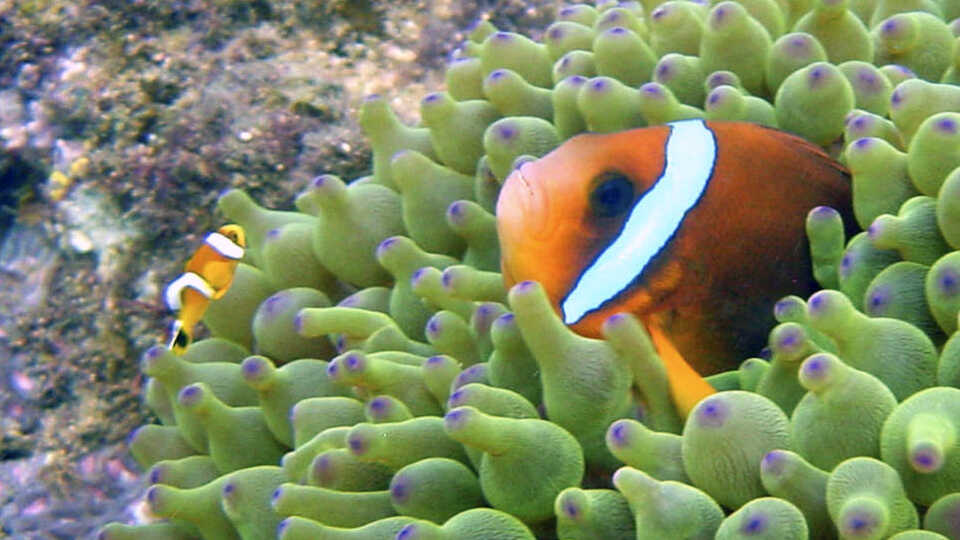Science News
Following Larvae

How do you track the movement of something that is only a few millimeters in size? Tiny satellite tags? Itty-bitty radio collars? Actually, gene flow, according to a new study in PLoS ONE.
Scientists know that many marine species travel long distances in the larval stage, floating in the open ocean before finding a place to settle—think coral, crustaceans, and fish. This dispersal from one population to another ensures genetic diversity within a species, keeping these animals healthy and thriving, especially as the planet changes. But understanding and following these movements has proven near impossible for scientists. Until now.
Researchers, led by Steve Simpson of the University of Exeter, tracked the movement of Omani clownfish (Amphiprion omanensis) between two very separate populations in theArabian Sea along the coast of Oman. “There are only two coral reef systems along this coast, and they are separated by 400 kilometers (almost 250 miles) of surf beaches,” Simpson says. “In order to persist as a single species, we know Omani clownfish must occasionally migrate between these two populations.”
To find out how this long-distance journey takes place, the team took genetic samples from about 400 adult fish within the two populations. The sampling was harmless—the fish were caught during 92 dives, and a small fin clip taken for DNA analysis before releasing them back to their colonies. The team used DNA fingerprinting to identify local, long-distant migrant, and hybrid individuals from populations throughout the entire species range.
“Just like accents that allow us to tell an Englishman from an American, fish populations develop their own genetic signatures,” says co-author Hugo Harrison of the Australian Research Council Centre of Excellence for Coral Reef Studies. “By looking at the signature of each fish we can tell whether it originated there or not. It’s like finding an Englishman in New York, they stand out.”
The DNA evidence identified that the majority of migrant fish had travelled from north to south, and so, to test whether this was due to prevailing currents, the team developed an oceanographic model for the region.
“This is an epic journey for these tiny week-old fish. When they arrive at the reef, they are less than a centimeter long, and only a few days old, so to travel hundreds of kilometers they must be riding ocean currents to assist their migration,” says Simpson.
And that is indeed true, says co-author Michel Claereboudt from Sultan Qaboos University. “We found that the pattern of migration corresponded to the dominant ocean currents in the region that are driven by the winter monsoon.”
Understanding how these larvae travel can help protect the waters they use, the team says. And these methods can help more than just clownfish. “This study is the furthest anyone has tracked the dispersal of coral reef fish, and it demonstrates that distant populations in the marine environment can be well connected,” says Simpson. “Our ability to predict how far fish larvae disperse helps us to manage coral reef ecosystems. Understanding connectivity means we can protect populations that are most sensitive, harvest from populations that have a regular and consistent turn-over, and design coherent networks of marine protected areas.”
Image: PLoS ONE